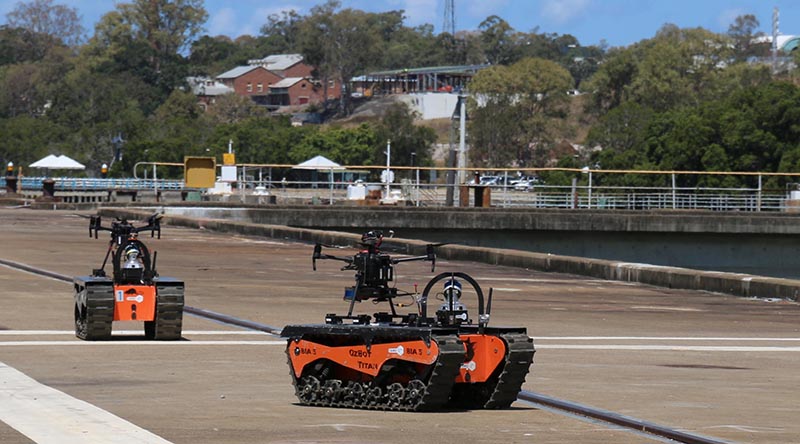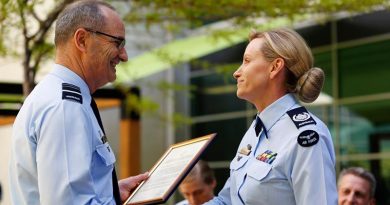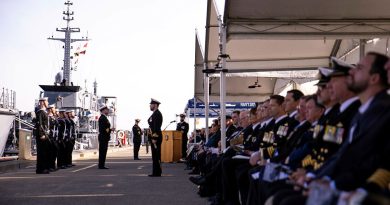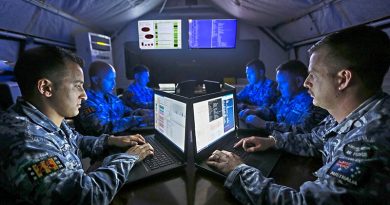Navy tests robots in disaster-relief exercise
Share the post "Navy tests robots in disaster-relief exercise"

Royal Australian Navy and defence industry have put robots to the test in a simulated counter-disaster operation in Brisbane.
CAPTION: Titan1 unmanned ground vehicles used during Exercise Genesis as part of the Royal Australian Navy’s Autonomous Warrior 2020-4. Unknown photographer.
Autonomous Warrior Genesis – the first of Navy’s flagship events exercising robotics, autonomous systems and artificial intelligence (RAS-AI) – saw unmanned vehicles (UxVs) deployed by air, land and water to respond to a fictional humanitarian and disaster-relief (HADR) scenario on the Brisbane River.
Minister for Defence Linda Reynolds said the exercise demonstrated Defence working with Australian industry to integrate emerging technologies with Navy platforms to rapidly respond in emergency situations.
“Australia’s commitment to maintaining a strong and secure region is predicated on ongoing modernisation of Defence capability as new and disruptive technologies emerge,” Minister Reynolds said.
“As announced in the 2020 Force Structure Plan, the government recognises the exploration of autonomous and un-crewed systems will further safeguard Australia’s capability and achieve expanded reach across the region.
“Using autonomous systems to respond to disaster scenarios is a potential game changer for Defence by providing the agility and technological edge to rapidly support our region in times of crisis.
“Navy’s recently launched RAS-AI Strategy emphasises the importance of strengthening Defence’s relationship with Australian industry to ensure that together we develop innovative new capabilities to respond to an evolving geostrategic environment.”
Autonomous Warrior Genesis took place at HMAS Moreton in Brisbane, in partnership with Emesent, Boeing Australia and EPE Pty Ltd.
Navy’s RAS-AI Strategy is available to industry on GovTeams.
.
.
.
.
.
.

.
.
Share the post "Navy tests robots in disaster-relief exercise"





